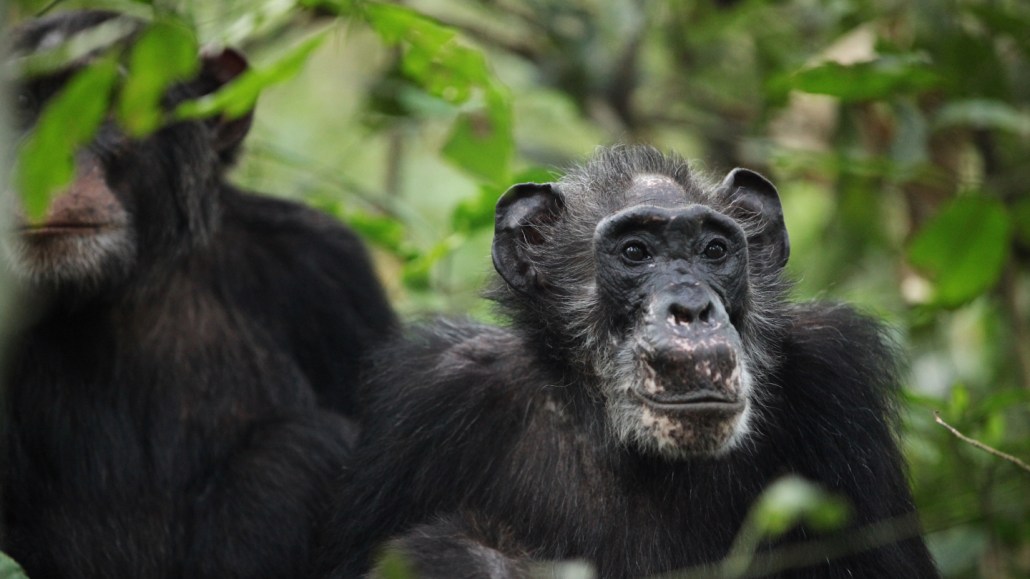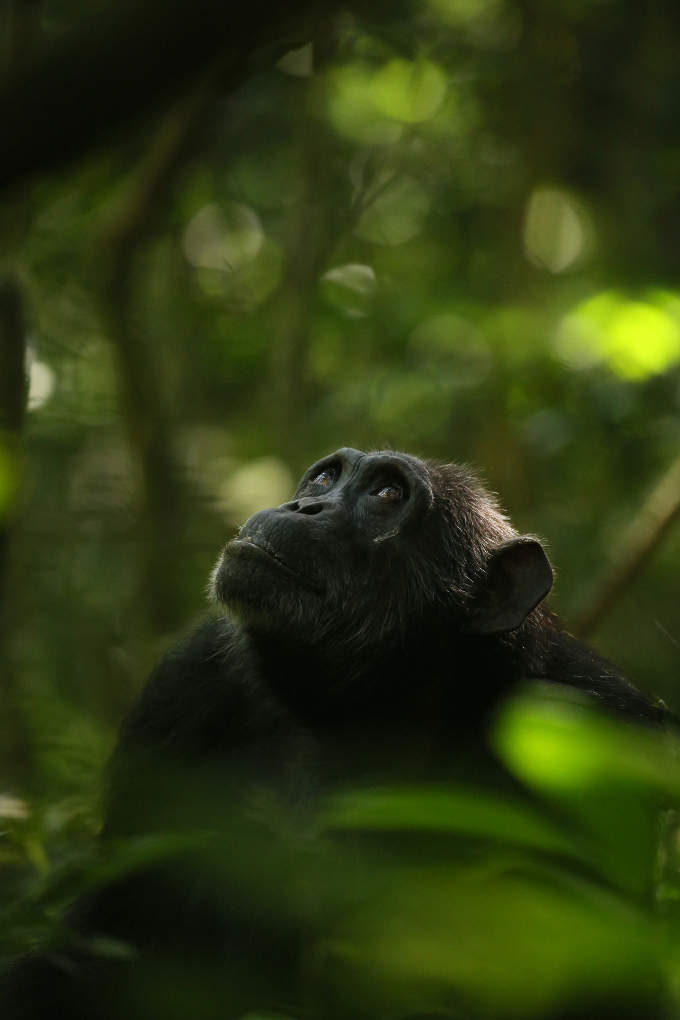Surprisingly long-lived wild female chimps go through menopause
It’s the first known example of wild, nonhuman primates going through the hormonal changes

A female chimp dubbed Ma Rainey, estimated to be about 68 years old, contributed to a new study that reports the first evidence of menopause in a wild, nonhuman primate species.
Kevin Langergraber/Arizona State University
Female chimps living in an East African forest experience menopause and then survive years, even decades, after becoming biologically unable to reproduce.
The apes are the first known examples of wild, nonhuman primates to go through the fertility-squelching hormonal changes and live well beyond their reproductive years.
The finding raises new questions about how menopause evolved, UCLA evolutionary anthropologist Brian Wood and colleagues conclude in the Oct. 27 Science.
Until now, females who experience menopause and keep living for years have been documented only in humans and five whale species. It’s unclear what evolutionary benefit exists to explain such longevity past the point of being able to give birth and pass on one’s genes.
Although evolutionary explanations for menopause remain debatable, the new finding reflects an especially close genetic relationship between humans and chimps, Wood says. “Both [species] are more predisposed to post-reproductive survival than other great apes.”
Some evidence suggests that female fertility ends at similar ages in humans and chimps (Pan troglodytes) if our ape relatives live long enough, says anthropologist Kristen Hawkes of the University of Utah in Salt Lake City. But in other studies, female chimps, such as those studied by Jane Goodall at Tanzania’s Gombe National Park starting in 1960, aged quickly and often died in their early 30s, usually while still having menstrual cycles, she says.
“What’s surprising [in Wood’s study] is so many females living so long after menopause,” Hawkes says.
Wood’s team examined mortality and fertility rates of 185 females in the Ngogo community of wild chimps in Kibale National Park in Uganda during field seasons that ran from 1995 through 2016. By first assessing chimps when they were young or middle-aged, the researchers were able to get an accurate read on the animals’ ages.
Hormonal measures of fertility declined after age 30, and the researchers observed no births in chimps older than 50. A total of 16 Ngogo females lived past age 50, some into their 60s. Urine samples taken from 66 Ngogo females, ages 14 to 67, revealed a decline in fertility starting after age 30 that terminated reproduction by around age 50. Menopause also results in an end to women’s reproduction at about age 50, Wood says.
In the Ngogo community, females, on average, live 20 percent of their adult years — defined as starting at age 14 — after having lost the ability to reproduce, the scientists estimate.

Wild chimps’ social lives do not fit a scenario, previously suggested by Hawkes and others, for the evolution of human menopause. Women, the idea goes, may live so long past their reproductive years because grandmothers provide vital care to their grandchildren (SN: 2/7/19). But female chimps move to new communities from their native ones during adolescence. Grandmothers usually have no breeding daughters nearby whom they can assist.
Another possibility is that older female chimps may possess experience and knowledge necessary for group survival. Related evidence suggests that older female killer whales often lead salmon hunts (SN: 3/5/15).
Or, the researchers suggest, an absence of predation by leopards due to human hunting in the 1960s, plentiful food sources and successful competition with nearby chimp groups may have supported a temporary emergence of long life spans among Ngogo females. Similarly, female survival long beyond the reproductive years also occurs in chimps, and some other mammals, that are fed and protected from predators in zoos and other captive settings.
But responses of captive animals offer little insight into how menopause may have evolved in the wild, Wood says.
Ngogo chimps inhabit a forest that has been protected from logging and exposure to deadly respiratory infections carried by humans, perhaps aiding male and female chimp longevity, the researchers say. Male chimps in the group live about as long as females do. Menopause may have evolved in chimps living in relatively undisturbed settings, such as Kibale, due to young females migrating to new groups, Wood says.
After these moves, aging females having kids become increasingly related to other breeders of both sexes and their offspring. At advanced ages, females with local kin — perhaps in ancient human groups as well as chimp communities — evolved to stop reproducing so that young females bringing fresh genes to the community could conceive new generations, the team suggests.
But Duke University evolutionary biologist Susan Alberts doubts that females in a slow-reproducing species such as chimps become genetically related to enough individuals in a new group for that evolutionary scenario to have played out.
Instead, the unusually potent longevity-enhancing conditions for Ngogo chimps may enable females to display an evolved capacity for surviving well beyond the reproductive years, Alberts says.
Alberts and colleagues previously analyzed long-term reproductive data for seven nonhuman primate species — including chimps — and a population of African hunter-gatherers. Females in the nonhuman primate species could survive reproductive declines for a year or two, but lower death rates in hunter-gatherers resulted in extended lives after menopause, Alberts says. “Menopause may be a latent trait in primates that gets revealed as mortality rates decline,” she says.
Few wild chimp communities have been studied as thoroughly and for as long as the Ngogo crowd. That makes the new menopause findings tough to generalize to wild chimps living elsewhere. “We still don’t know much about most chimps’ lives,” Alberts says.







